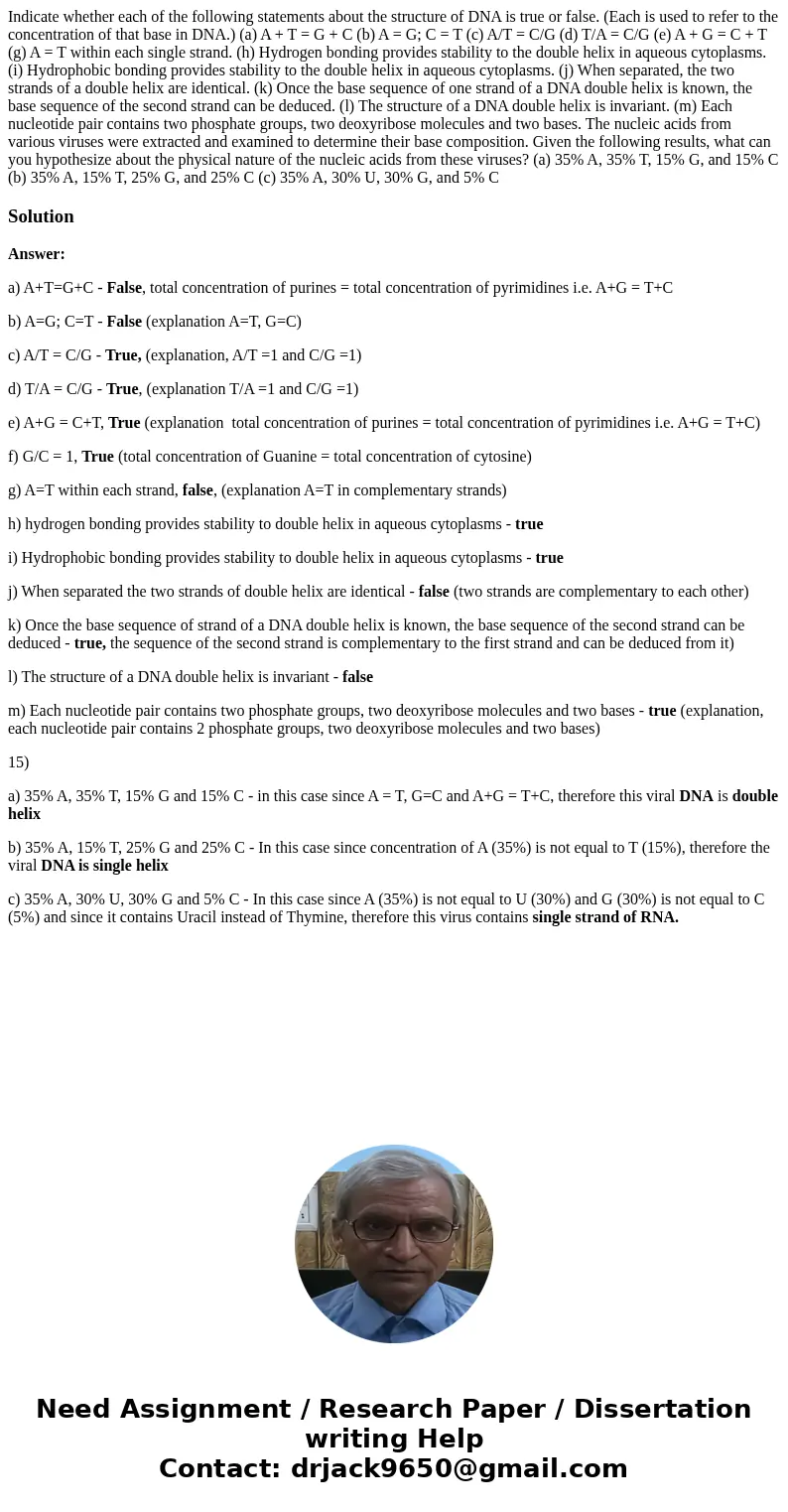Indicate whether each of the following statements about the
Solution
Answer:
a) A+T=G+C - False, total concentration of purines = total concentration of pyrimidines i.e. A+G = T+C
b) A=G; C=T - False (explanation A=T, G=C)
c) A/T = C/G - True, (explanation, A/T =1 and C/G =1)
d) T/A = C/G - True, (explanation T/A =1 and C/G =1)
e) A+G = C+T, True (explanation total concentration of purines = total concentration of pyrimidines i.e. A+G = T+C)
f) G/C = 1, True (total concentration of Guanine = total concentration of cytosine)
g) A=T within each strand, false, (explanation A=T in complementary strands)
h) hydrogen bonding provides stability to double helix in aqueous cytoplasms - true
i) Hydrophobic bonding provides stability to double helix in aqueous cytoplasms - true
j) When separated the two strands of double helix are identical - false (two strands are complementary to each other)
k) Once the base sequence of strand of a DNA double helix is known, the base sequence of the second strand can be deduced - true, the sequence of the second strand is complementary to the first strand and can be deduced from it)
l) The structure of a DNA double helix is invariant - false
m) Each nucleotide pair contains two phosphate groups, two deoxyribose molecules and two bases - true (explanation, each nucleotide pair contains 2 phosphate groups, two deoxyribose molecules and two bases)
15)
a) 35% A, 35% T, 15% G and 15% C - in this case since A = T, G=C and A+G = T+C, therefore this viral DNA is double helix
b) 35% A, 15% T, 25% G and 25% C - In this case since concentration of A (35%) is not equal to T (15%), therefore the viral DNA is single helix
c) 35% A, 30% U, 30% G and 5% C - In this case since A (35%) is not equal to U (30%) and G (30%) is not equal to C (5%) and since it contains Uracil instead of Thymine, therefore this virus contains single strand of RNA.

 Homework Sourse
Homework Sourse